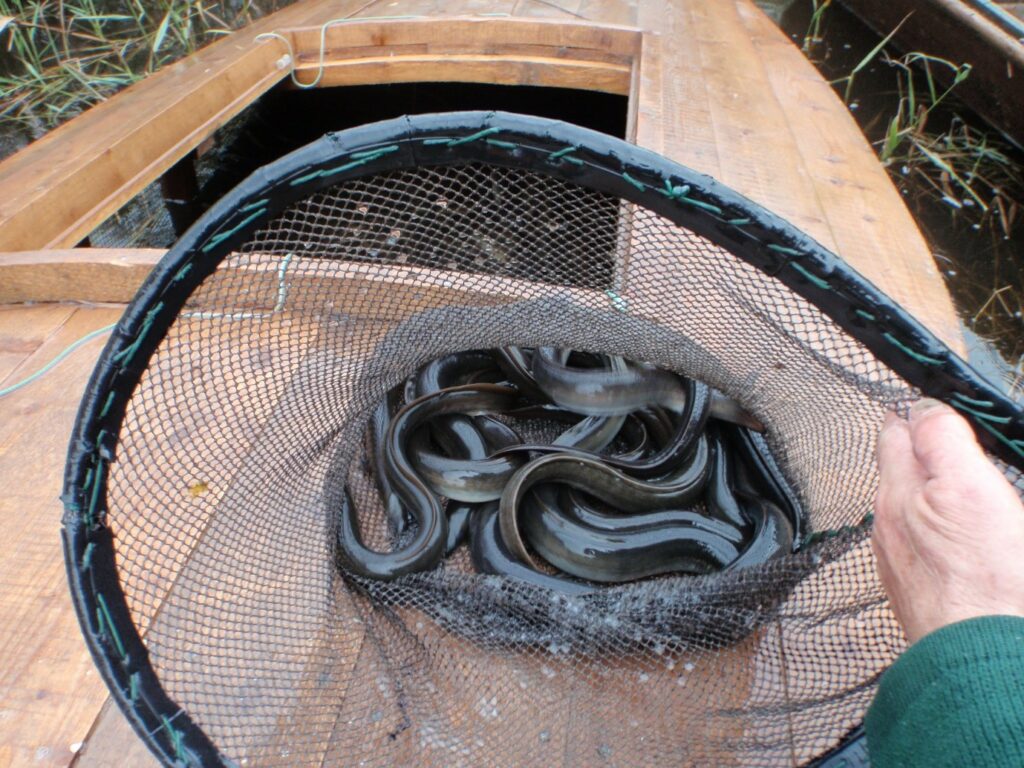Smoked Eel
Eel is a key element of the Mediterranean diet
Smoked Eel
Eel is a cornerstone of the Mediterranean diet, renowned for its richness in Ω3 fats, delicate taste, and high nutritional value. After careful processing, it reaches consumers in the form of smoked delicacies prepared in traditional ovens, free from preservatives and additives. The filleting and standardization of eels adhere to international standards, making them an excellent complement to green salads.
The eel is integral to both the Greek and broader Mediterranean diet. Its impressive nutritional value, with abundant Ω3 fats, and its delicate flavor make it a true delicacy. The preparation process commences with eel cleaning, followed by salting and smoking in a traditional oven WITHOUT preservatives and additives. The final step includes filleting and standardizing the eels according to international standards.
Benefits & Nutritional Value
- Eel contains no sugar. It contains low sodium, and high phosphorus levels.
- It is a rich source of essential vitamins, including A, B1, B2, B12, D, and E.
- Eel contributes to reducing cholesterol levels, lowering blood pressure, and decreasing the risk of arthritis development.
- It promotes optimal vision, normal brain development, and proper nervous system function.
- Scientific studies have shown that eel consumption significantly reduces the risk of developing type 2 diabetes. With its high omega-3 content, it can delay the onset of diabetes in individuals with glucose intolerance and naturally safeguards against cardiovascular disease.
European eel (Anguilla anguilla)
European eel (Anguilla Anguilla) starts its life cycle in the ocean· specifically in the Sargasso Sea in the Atlantic Ocean. It spends most of its life in the transitional and inland waters of Europe and returns to the ocean to hatch its eggs and then die.

In particular, Juvenile eels take advantage of the Gulf Stream and the North Atlantic Current to approach the European coast, where they transform into glass eels. Once they enter inland waters, they take the form of a small eel (elver). Then, as they mature, they take the form of yellow eels and finally transform into silver eels, when they are again ready to migrate and breed in the Sargasso Sea.
In Greece, there is a great commercial interest in eel, as it is an exportable product of high commercial value.
The European eel population is declining and the current fishery for the species is considered to be outside sustainable limits. To this end, it has been included in EU fisheries data collection regulations (European Council Regulation 1543/2000 and European Commission Regulations 1639/2001, 1581/2004). According to the new Regulation 199/08 (Article 3), the monitoring of commercial and recreational eel fisheries in inland waters and lagoons must be included in the national data collection programme of each Member State.
